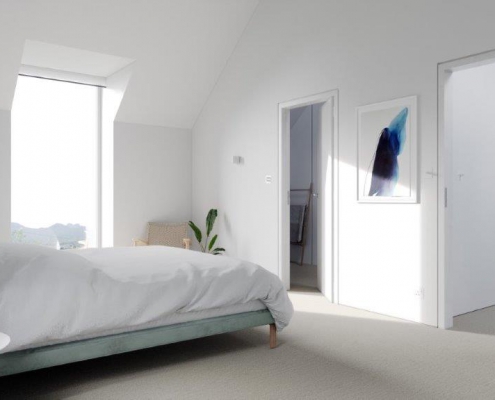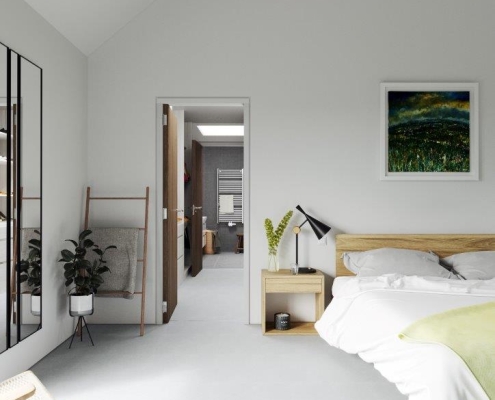7 Design Rules to Create a Healthy, Happy Home
Beyond looking at the style and aesthetics of your new house, or extension; we, as architects need to understand how it is you want to live in your home; the flow, the mood, and how you want to interact with those you share a home with. We look at how you live, and how you want to live.
- Along with your architect, understand how you like to use the spaces in your house. When you use them eg do you entertain at the dining table, the open plan area, or the snug? Understanding when you are likely to use these spaces – so the snug is only used in the evening – means that we can design a house that the sun rotates around you, as you move through the house during the day. So the quality of light is best for where you are.
- The mood of your house, and each room, can dictate how you use a room, when you use it, and even the feelings (or mood) that the room can evoke. For example, a bedroom free from wardrobes, furniture, light and bright, can help create a tranquil interior, which in turn can help create a calm you, which can help with a restful nights sleep.
- Thermal comfort. As Passive House architects, this is a big one for us! If your house is too cold – or more frequently in modern houses, overheating – then it can be very difficult to feel happy, and healthy in your home. With Passive House Principles, we model your house and carry out complex calculations to reduce these possibilities.
- If your house is old, and leaky, you are likely to feel the cold from draughts. Along with hotspots, this leads to thermal discomfort. To prevent draughts, the airtightness of modern (and renovated) houses is improved. When this happens, we also need to look at the ventilation in your house; as studies have shown that improvements in living conditions shows improvement in health EXCEPT where there is no ventilation system installed. If you think about it – increasing the airtightness retains all those toxins (smells from cooking, CO² from breathing, VOC’s from paints, moisture etc). These need to be removed and replaced with fresh air, preferably heated via a heat recovery unit.
- Connection with nature. Studies have shown that a connection with nature helps reduce stress; but also has physiological benefits too. A study in England in 2008 found that circulatory disease was far less pronounced in people who lived in greener areas. This can be done by inside / outside connection; outside ‘rooms’; orientating your house to make the most of the green landscape; creating small garden areas (for herb gardens) etc. However, the use of timber, potted plants, & natural materials in your home can also create that same connection, and have benefits too.
- The benefits of natural light are obvious. Sunlight makes us happy. Having high levels of natural light in the early part of the day, and lowering the light as the day goes on (ie low lighting in the evening), helps us to get good quality sleep. And we have all be accustomed to the importance of ‘8 hours of sleep a night’ soundtrack for most of our lives!
- Connection with your family. Designing your house so that you can have quiet, away spaces, whilst also creating opportunities for social connection can be beneficial. We are social creatures, and need social interaction. Design it in for happiness!





